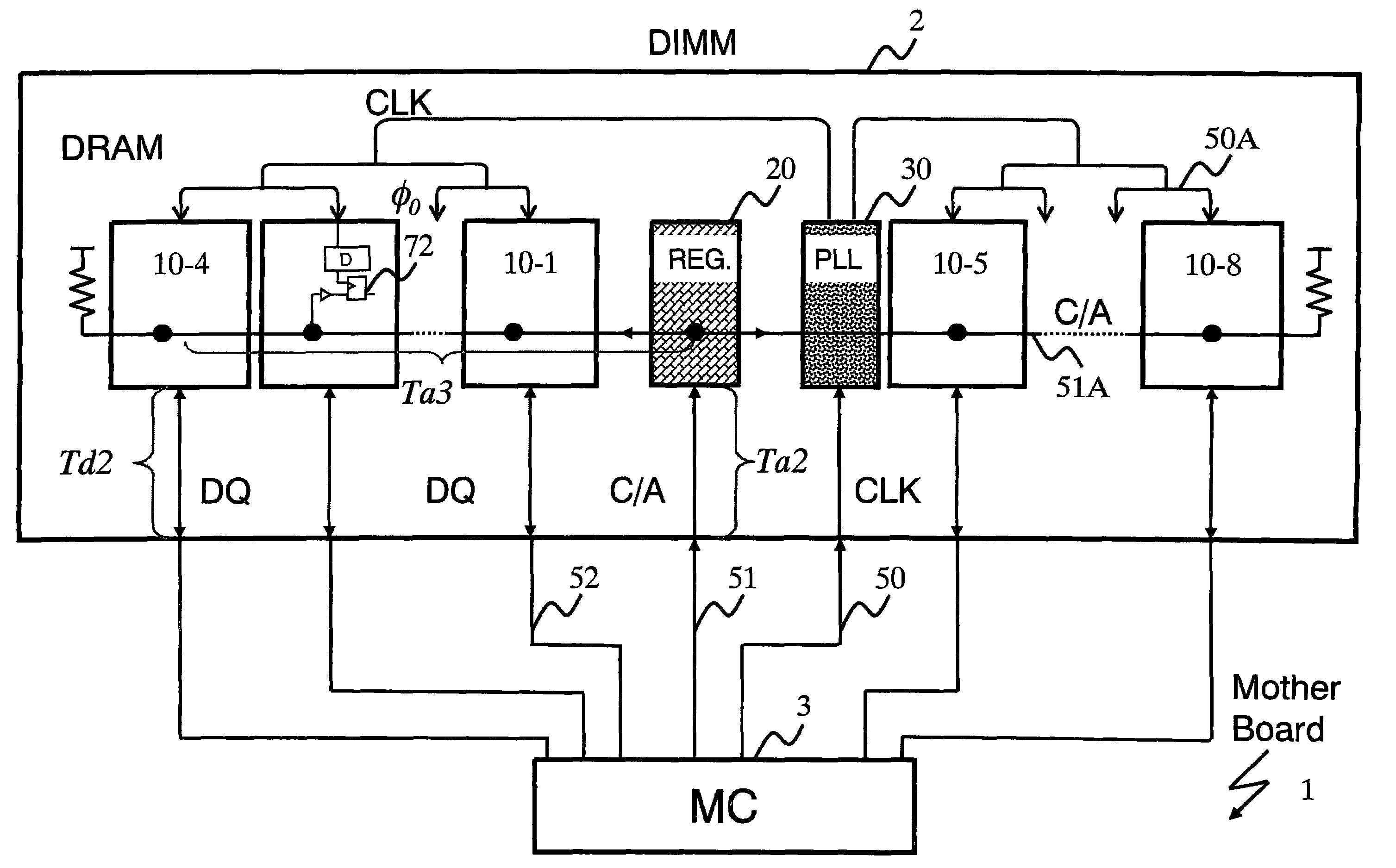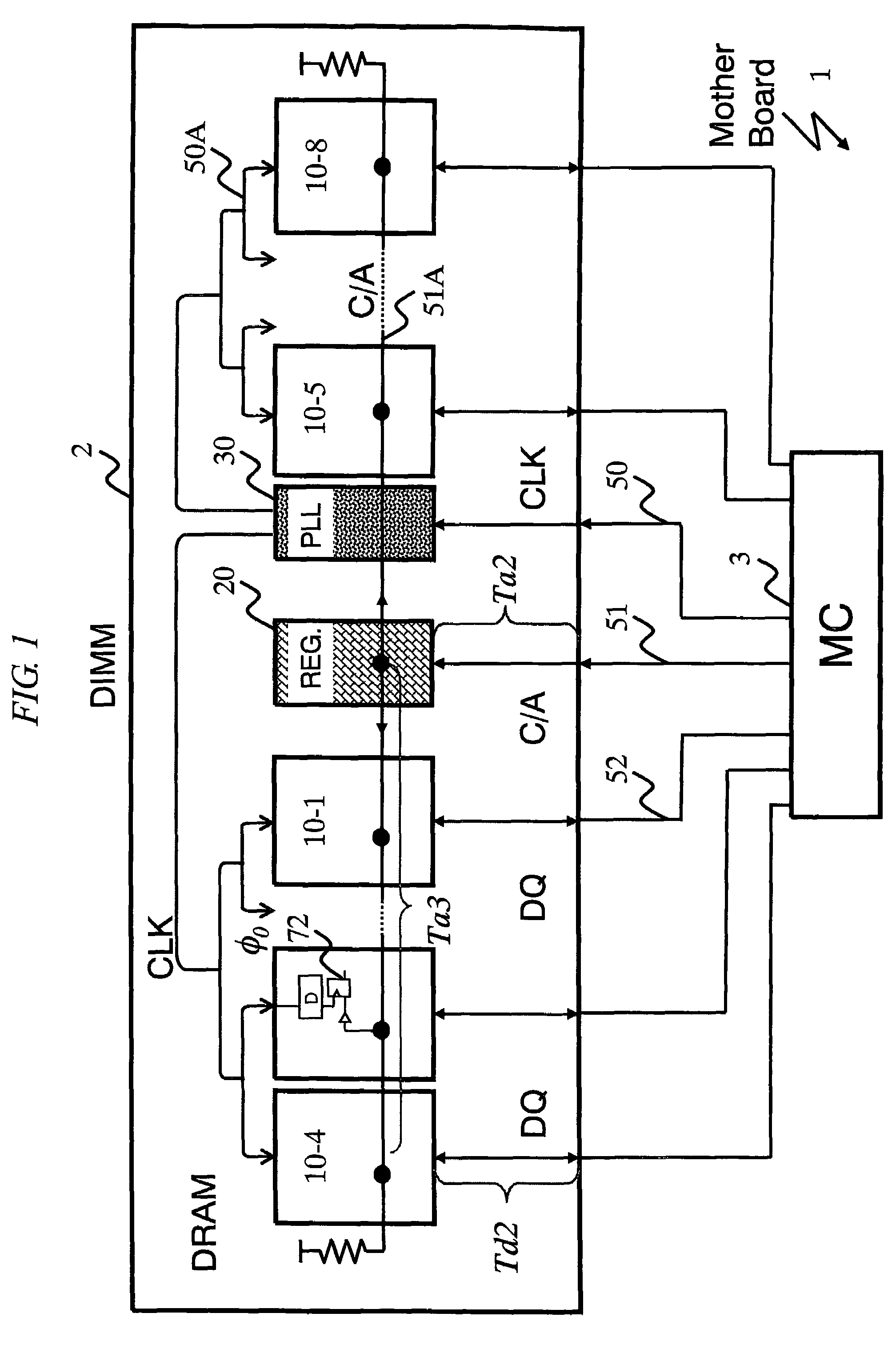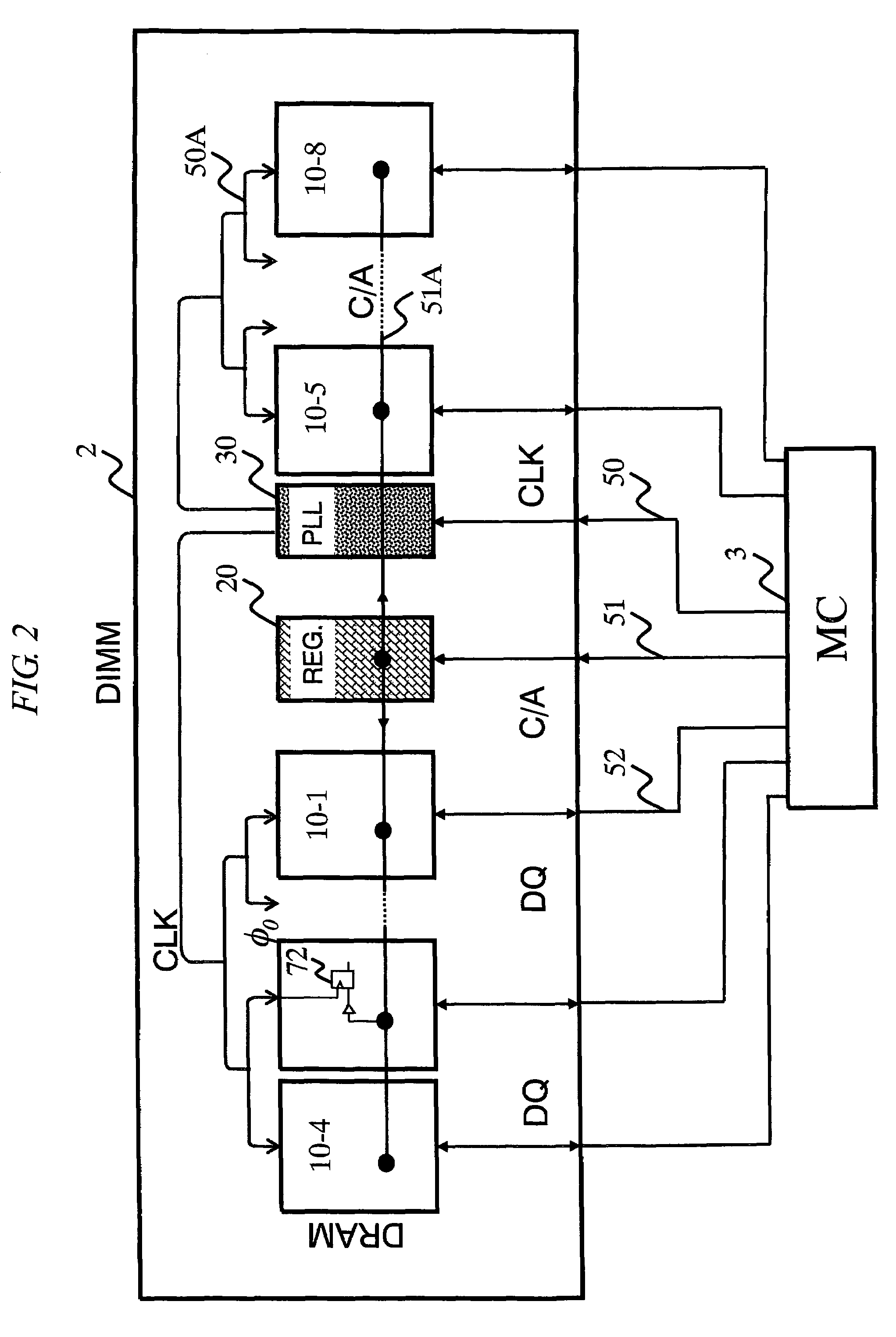Semiconductor memory module, memory system, circuit, semiconductor device, and DIMM
a memory module and semiconductor technology, applied in the field of bus connection technique, can solve the problems of short timing margin, inability to allow time difference due to a wiring length difference, and low wiring efficiency
- Summary
- Abstract
- Description
- Claims
- Application Information
AI Technical Summary
Benefits of technology
Problems solved by technology
Method used
Image
Examples
first embodiment
[0047]A first embodiment will be described with reference to FIG. 1.
[0048]The reference numerals “10-1” to “10-8” denote DRAMs mounted on a DIMM 2. In addition to the DRAMs 10-1 to 10-8, the DIMM 2 incorporates a C / A register 20 (hereafter abbreviated as “register”) for command / address signals and a clock signal stabilizing circuit (hereafter abbreviated as “PLL”) 30.
[0049]A memory controller (hereafter abbreviated as “MC”) 3 executes control of reading and writing of signals to the DRAMs 10-1 to 10-8, and is mounted on a print circuit board (hereafter abbreviated as “motherboard”) 1. To the respective DRAMs 10-1 to 10-8 from the MC 3, terminals on which the DIMM 2 is mounted are connected through wirings on the motherboard 1.
[0050]A C / A signal 51 is transmitted from the MC 3 to a register 20 mounted on the DIMM 2, and connected from the register 20 to each of the DRAMs 10-1 to 10-8 on the DIMM 2. The reference numeral “51A” denotes a signal within the DIMM 2. In FIG. 1, the registe...
second embodiment
[0076]With reference to FIG. 6 a second embodiment will be described.
[0077]The present embodiment is characterized in that the same line is used for a clock for receiving the C / A signals and for a clock distributed to each DRAM.
[0078]On the DIMM 2, the DRAMs 10-1 to 10-8, the register 20, and the PLL 30 are mounted. The register 20 and the PLL 30 are located at an end of the DIMM 2. Then, C / A signals 51B in the DIMM 2 are wired into a daisy-chain shape. Also for clock signals 50B, a folded wiring from the PLL 30 is used, and clock-input terminals of the DRAMs 10-1 to 10-8 are respectively connected to the wiring before folding and that after folding. In addition, as a far end of the wiring of the clock signals 50B is a matching end, there is no reflection at this part.
[0079]In order to adopt this configuration, two clock signals having a different phase in accordance with a wiring-length difference are inputted to the DRAMs 10-1 to 10-8. If terminals are denoted by the reference num...
third embodiment
[0090]A third embodiment will be described with reference to FIG. 10.
[0091]The present invention is an example in which the clock signals 50B in the second embodiment are constituted by a directional coupler. FIG. 10 shows only the clock signals and the C / A signals, and other signals are the same as those in the second embodiment. In this embodiment, the clock signals are denoted by the reference numeral “50C”. In addition, although four DRAMs is used to simply describe this embodiment, the same effects can be achieved irrespective of whether the number of the DRAMs is smaller or greater. One wiring for the clock signals 50 is drawn from the PLL in (register+PLL) 21, and a far end of the above wiring is an open end. Thus, the clock signals 50C outputted from the PLL are totally reflected at the far end. The totally reflected pulses are absorbed by the termination resistor provided in the PLL and are not reflected again.
[0092]By using, as a primary coupling wiring, the wiring of the ...
PUM
 Login to View More
Login to View More Abstract
Description
Claims
Application Information
 Login to View More
Login to View More - R&D
- Intellectual Property
- Life Sciences
- Materials
- Tech Scout
- Unparalleled Data Quality
- Higher Quality Content
- 60% Fewer Hallucinations
Browse by: Latest US Patents, China's latest patents, Technical Efficacy Thesaurus, Application Domain, Technology Topic, Popular Technical Reports.
© 2025 PatSnap. All rights reserved.Legal|Privacy policy|Modern Slavery Act Transparency Statement|Sitemap|About US| Contact US: help@patsnap.com



